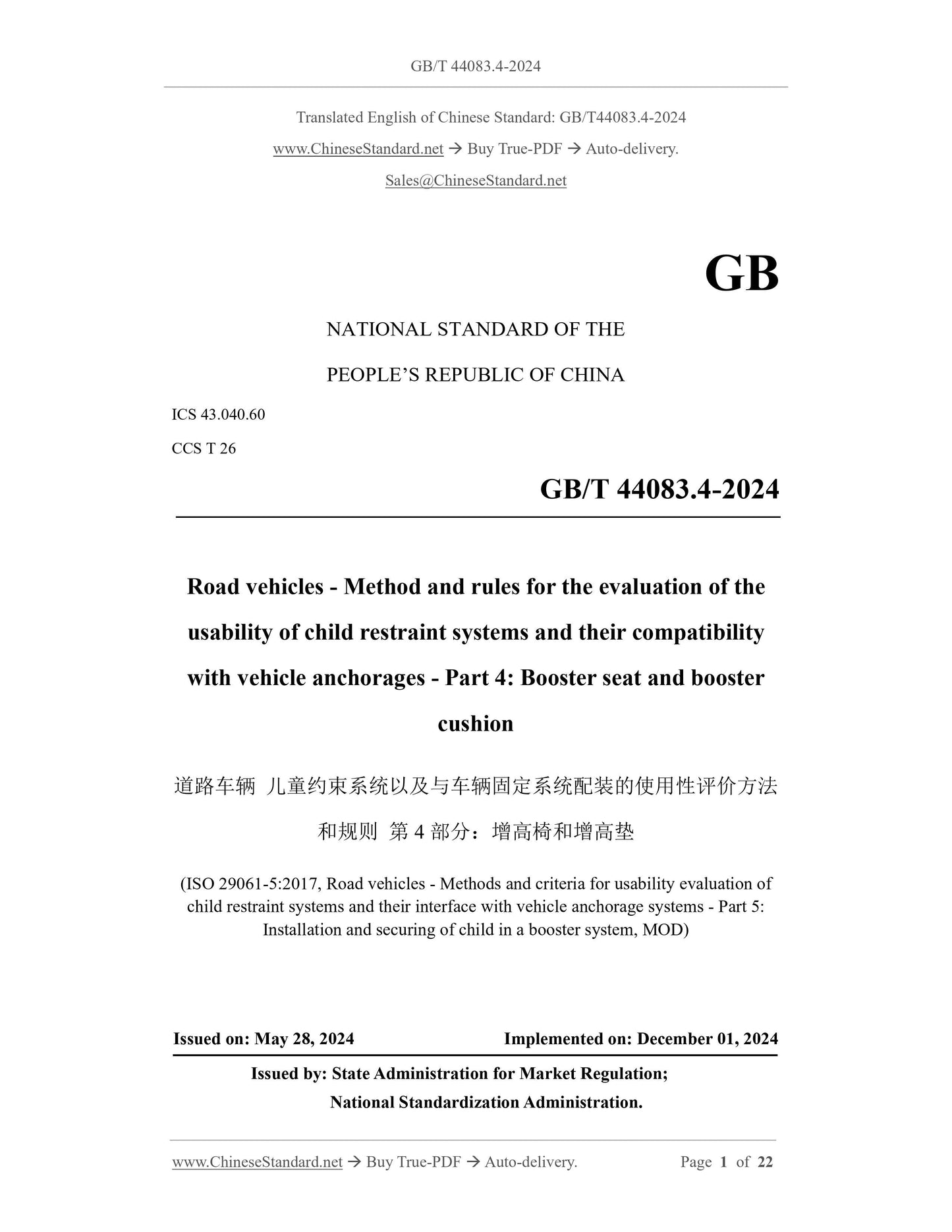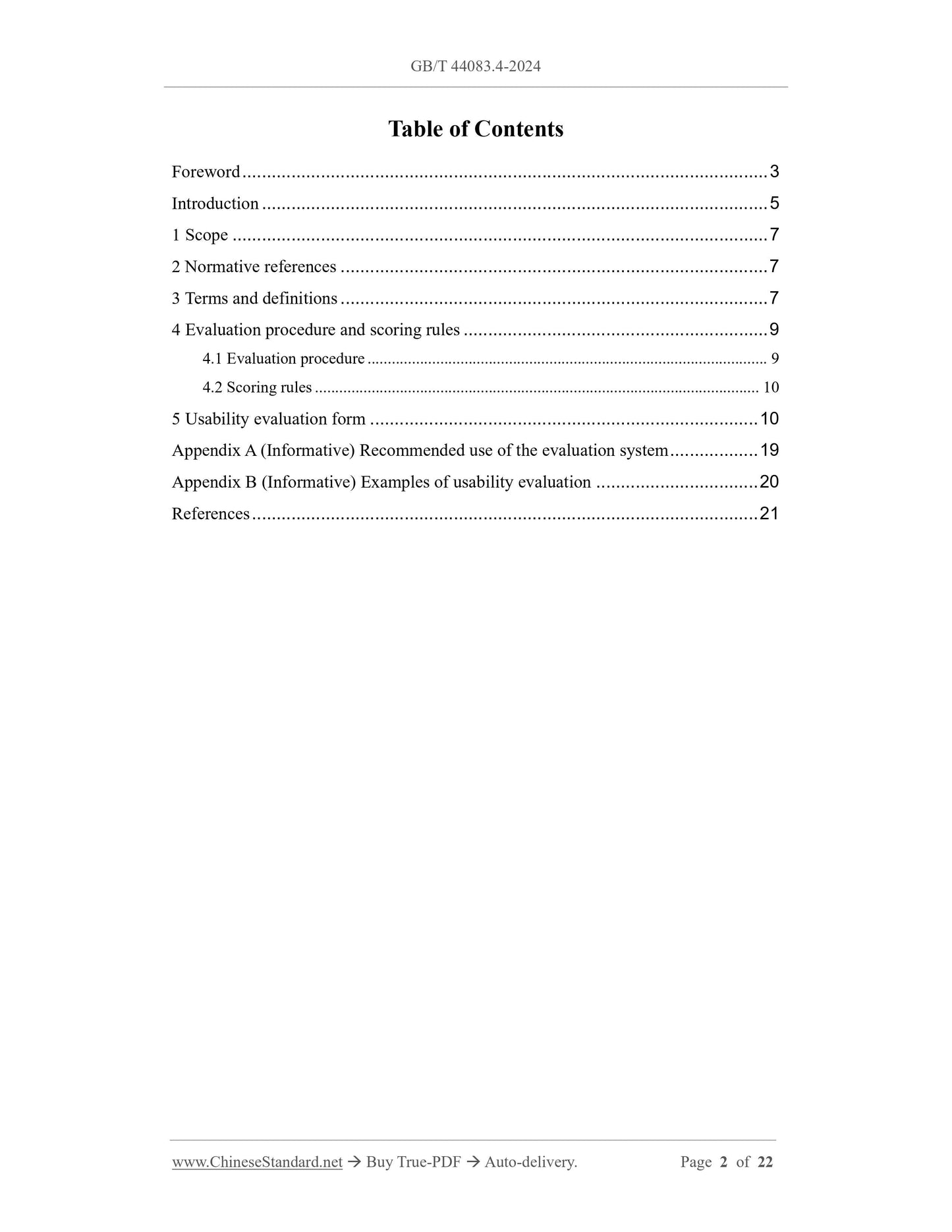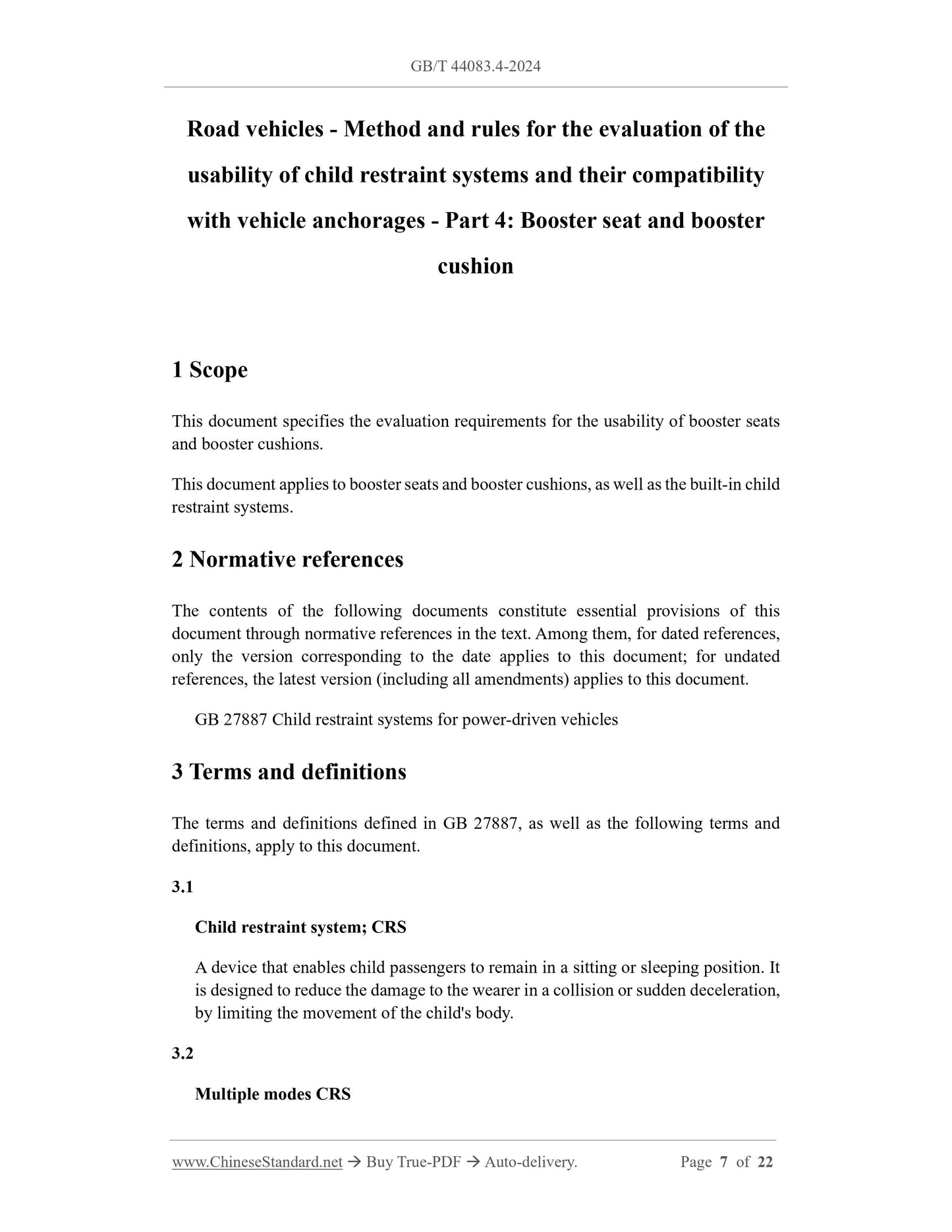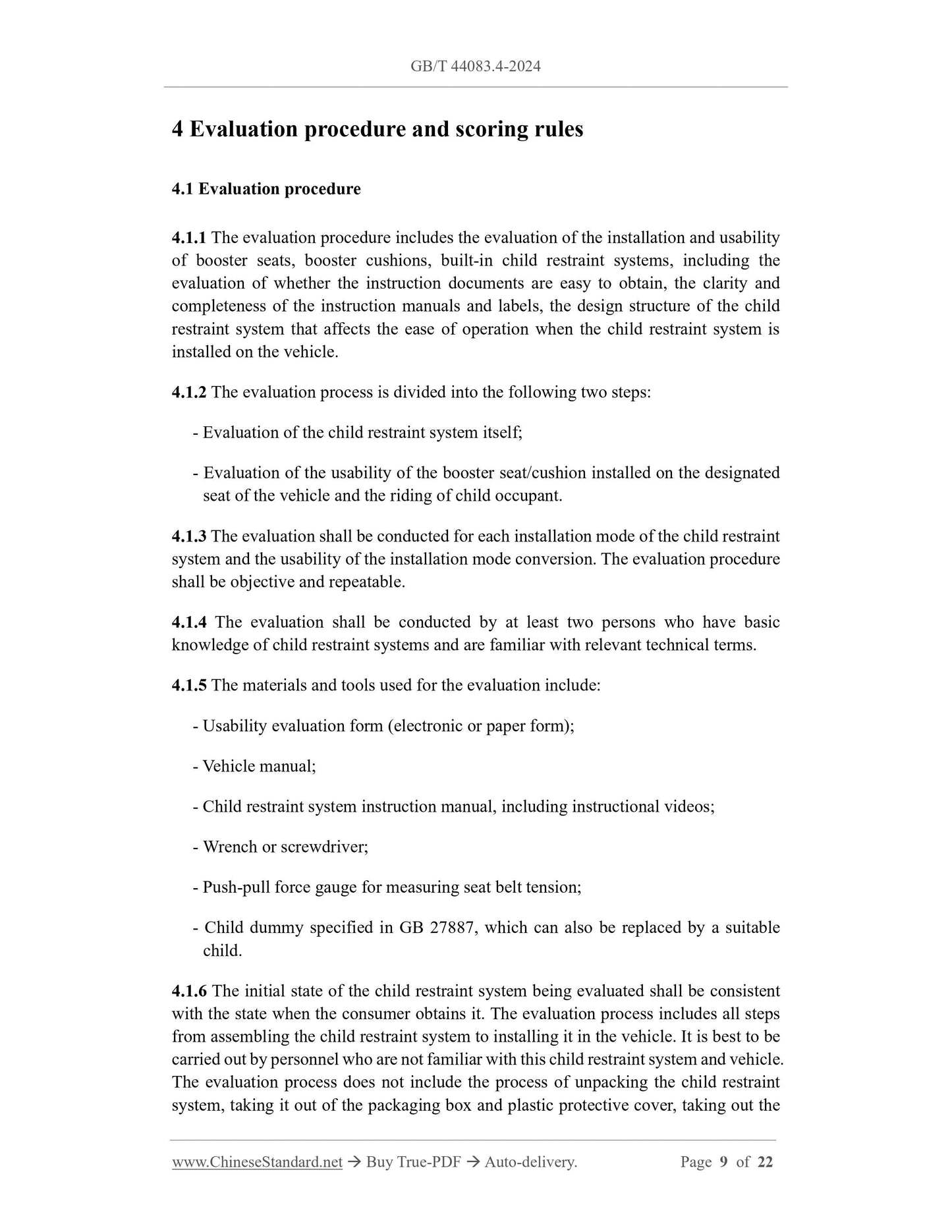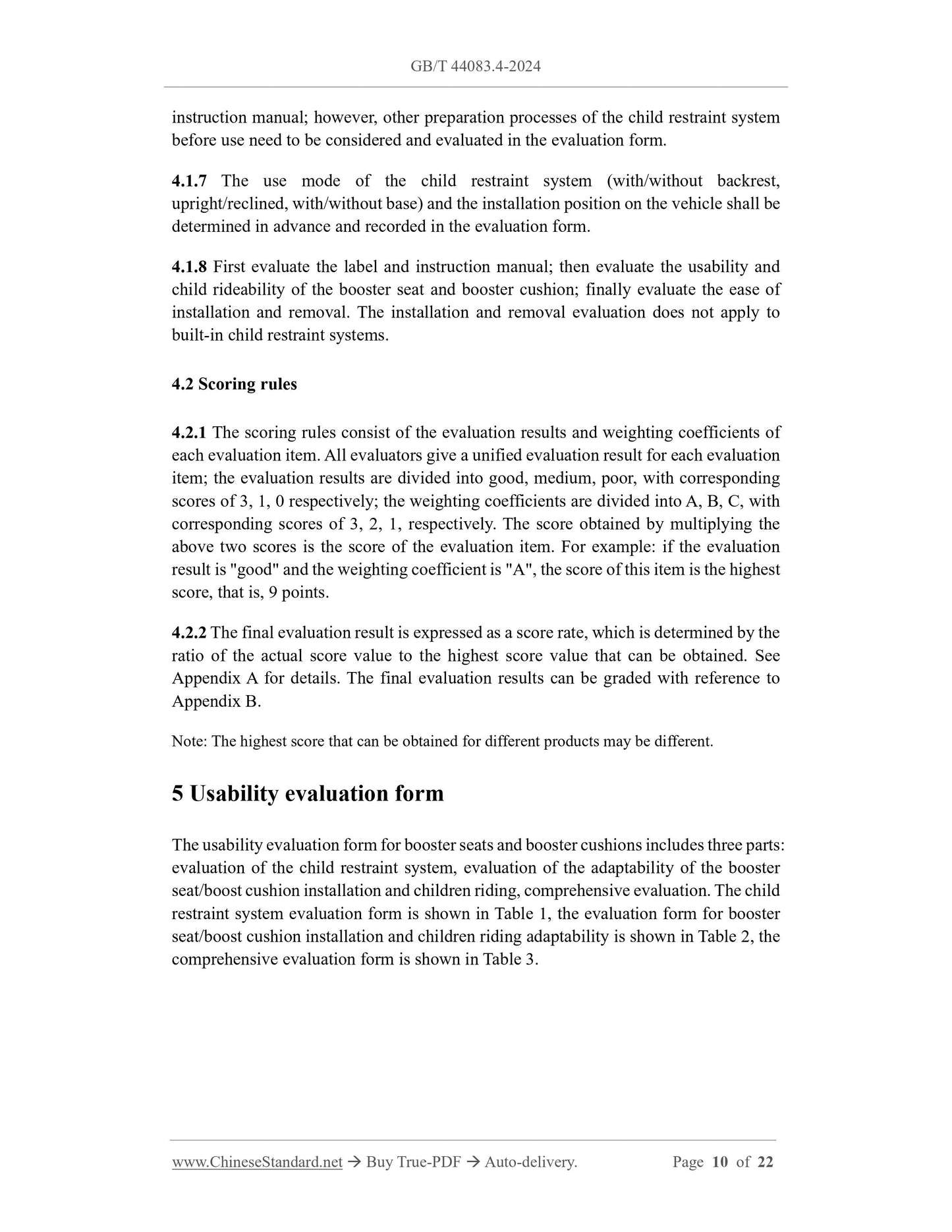1
/
of
5
www.ChineseStandard.us -- Field Test Asia Pte. Ltd.
GB/T 44083.4-2024 English PDF (GB/T44083.4-2024)
GB/T 44083.4-2024 English PDF (GB/T44083.4-2024)
Regular price
$305.00
Regular price
Sale price
$305.00
Unit price
/
per
Shipping calculated at checkout.
Couldn't load pickup availability
GB/T 44083.4-2024: Road vehicles - Methods and rules for the evaluation of the usability of child restraint systems and their compatibility with vehicle anchorages - Part 4: Booster seat and booster cushion
Delivery: 9 seconds. Download (and Email) true-PDF + Invoice.Get Quotation: Click GB/T 44083.4-2024 (Self-service in 1-minute)
Newer / historical versions: GB/T 44083.4-2024
Preview True-PDF
Scope
This document specifies the evaluation requirements for the usability of booster seatsand booster cushions.
This document applies to booster seats and booster cushions, as well as the built-in child
restraint systems.
Basic Data
| Standard ID | GB/T 44083.4-2024 (GB/T44083.4-2024) |
| Description (Translated English) | Road vehicles - Methods and rules for the evaluation of the usability of child restraint systems and their compatibility with vehicle anchorages - Part 4: Booster seat and booster cushion |
| Sector / Industry | National Standard (Recommended) |
| Classification of Chinese Standard | T26 |
| Word Count Estimation | 18,148 |
| Date of Issue | 2024-05-28 |
| Date of Implementation | 2024-12-01 |
| Issuing agency(ies) | State Administration for Market Regulation, China National Standardization Administration |
Share
